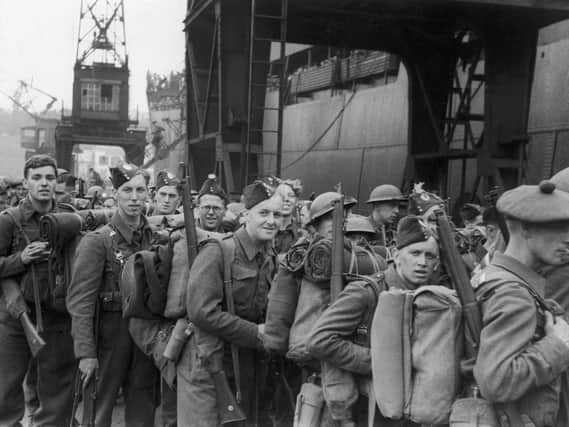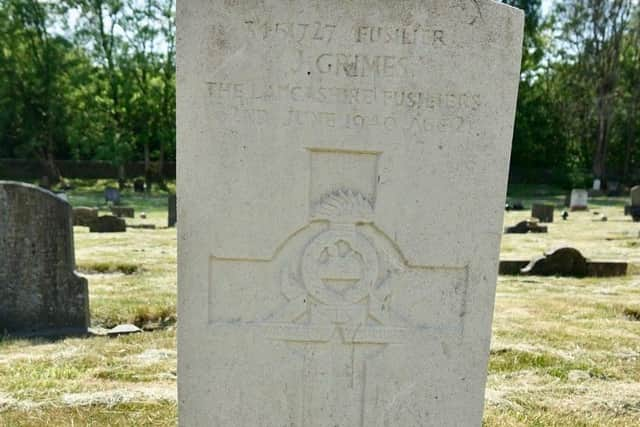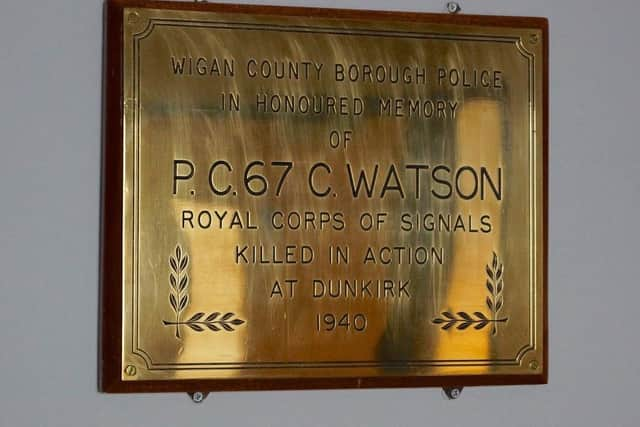Remembering Wigan soldiers who died in Dunkirk evacuation 80 years later


Almost 50 servicemen from the borough died during the dramatic events.
Although the rescue of thousands of soldiers from the beaches of northern France by a flotilla of boats, including many volunteers who crossed the Channel to pick up the stranded forces, has entered national folklore as a heroic effort many men did not make it back to Britain.
Advertisement
Hide AdAdvertisement
Hide AdRev Long has concluded from the dates of their deaths that Wigan soldiers were killed during Operation Dynamo itself, were wounded as they escaped from the continent and later died in hospital or even got left behind and made the ultimate sacrifice in impossible efforts to put up a rearguard action against the Nazi advance.


Others were killed as they tried to fight their way to the beaches to Dunkirk to meet the rescue fleet.
Operation Dynamo took place between May 27 and June 4, 1940 and the events still have a fascination for many people, as the recent successes of the films Dunkirk and Darkest Hour show.
Rev Long says his research into local losses at Dunkirk shows how important it is to look in depth at any historical event, which is inevitably complex and has many sides to it.
Advertisement
Hide AdAdvertisement
Hide AdHe said: “The majority of the Wigan men killed appear to have died during the period of the evacuation itself.


“Some of them were killed in engagements with the enemy as the withdrawal happened and some died of wounds later.
“Others seem to have been left behind, judging by the dates they died and the fact and the fact they are not recorded as prisoners of
war.
“They were killed in combat so I assume they just carried on fighting. They died after Operation Dynamo had finished so there was no way out for them.
Advertisement
Hide AdAdvertisement
Hide Ad“There was an awful lot of euphoria over the fact so many men were rescued yet so many lost their lives as well.
“There was a lot of beefing up the great victory of bringing all these men home but it was also a huge defeat to have to run way from the battle, leaving the French behind.
“It was a great loss of life as well as a great saving of life.
“It’s the same as any kind of rejoicing over victory. There is always another side of suffering that sometimes gets forgotten.”
Advertisement
Hide AdAdvertisement
Hide AdAltogether Rev Long has recorded 48 names from Wigan killed during or around Operation Dynamo, two of which are commemorated in a Wigan Observer from 1940.
L-Cpl Cyril Watson, a signaller, died of his wounds on the way back across the Channel. He was a policeman in the borough’s force and a brass plaque to him is still on view at Wigan Police Station.
Watson, who died aged 30 and had not long been married, is buried in the Dunkirk plot at St James’ Cemetery in Dover.
The article also remembers Fusilier James Grimes, who died aged just 21.
Advertisement
Hide AdAdvertisement
Hide AdHe also seems to have been wounded during the operation but died in hospital in southern England. His body was returned to the town and his grave is in Wigan Cemetery.
Rev Long has also discovered that a number of local soldiers perished in two other operations to get Allied soldiers out of France, which are today far less known than the events at Dunkirk.
A total of 13 Wigan servicemen died when the Lancastria was sunk off the coast of western France during Operation Aerial, which took place shortly after the Dunkirk evacuation and rescued around 200,000 troops.
Sadly the Lancastria’s sinking was an immense human tragedy, with around 3,500 of the 6,700 people on board losing their lives.
Advertisement
Hide AdAdvertisement
Hide AdEight Wiganers also died on June 8, 1940 when the aircraft carrier HMS Glorious was sunk by two German battle cruisers while returning soldiers from Norway as part of Operation Alphabet.
Rev Long says these events were kept shrouded in mystery at the time.
He said: “The Lancastria incident was covered up completely, remaining a secret for years afterwards, and the sinking of HMS Glorious was only made public because the Germans made it public.
“The Glorious was an aircraft carrier and a major ship of the fleet.
Advertisement
Hide AdAdvertisement
Hide Ad“To lose such a vessel obviously went against the idea that Dunkirk was a big morale boost.”
The 48 Wigan men who died in the evacuation from Dunkirk were: George Armstrong*, John Atherton, John Baxter, Harold Bellis*, William Brown*, Thomas Bryan**, Ernest Clarkson, Lawrence Craig*, Gerald Culshaw*, Harry Fairclough**, Arthur Farrall, James Gerrard Foster*, Arthur Garvin*, John Gaskell*, William John Alexander Grey*, William Green**, Frank Grime, James Grimes, William Hesketh*, William Hodgkinson, Joseph Hogan, Walter G Hornby, James Howarth*, John Hughes, Clifford Johnson**, Harold Johnson*, Roger Jones, John Martinus Koppens*, John Lunn*, Joseph Lynch, Thomas Major*, Harry Ormisher*, Edward Owen, Arthur Austin Place**, Archie Craig Platt*, John Richards*, Patrick Riley*, Thomas Hayes Rostron*, Joseph Henry Ryan, Hugh Seddon*, Leslie Seddon*, Victor Hugo Sharples*, Thomas Smith, William Swindell, James Timpson*, Cyril Watson*, Thomas Wood, William Yates.
The names followed by an asterisk died during the days of Operation Dynamo. Those who died in France after being left behind are double asterisked.
The 13 local men who died when the Lancastria sank were: Herbert Cunliffe, Frederick Charles Denison, John Fairhurst, Joseph Gaskell, Charles Gibson, William S Honderwood, William McCormick, Stephen J Marron, Roger Morgan, Peter Thomason, Frederick Unsworth, Walter Unsworth, Henry Wilson.
Advertisement
Hide AdAdvertisement
Hide AdThe Wiganers lost in HMS Glorious’ sinking were: Walter Leslie Duckworth, Samuel Alker, JF Gorton, John Jameson, Edward Knight, Peter McNicholas, BT Starkie, F Swan.
Rev Long based his research into the events 80 years ago on Dr Eric McPherson’s book listing war casualties associated with Wigan.